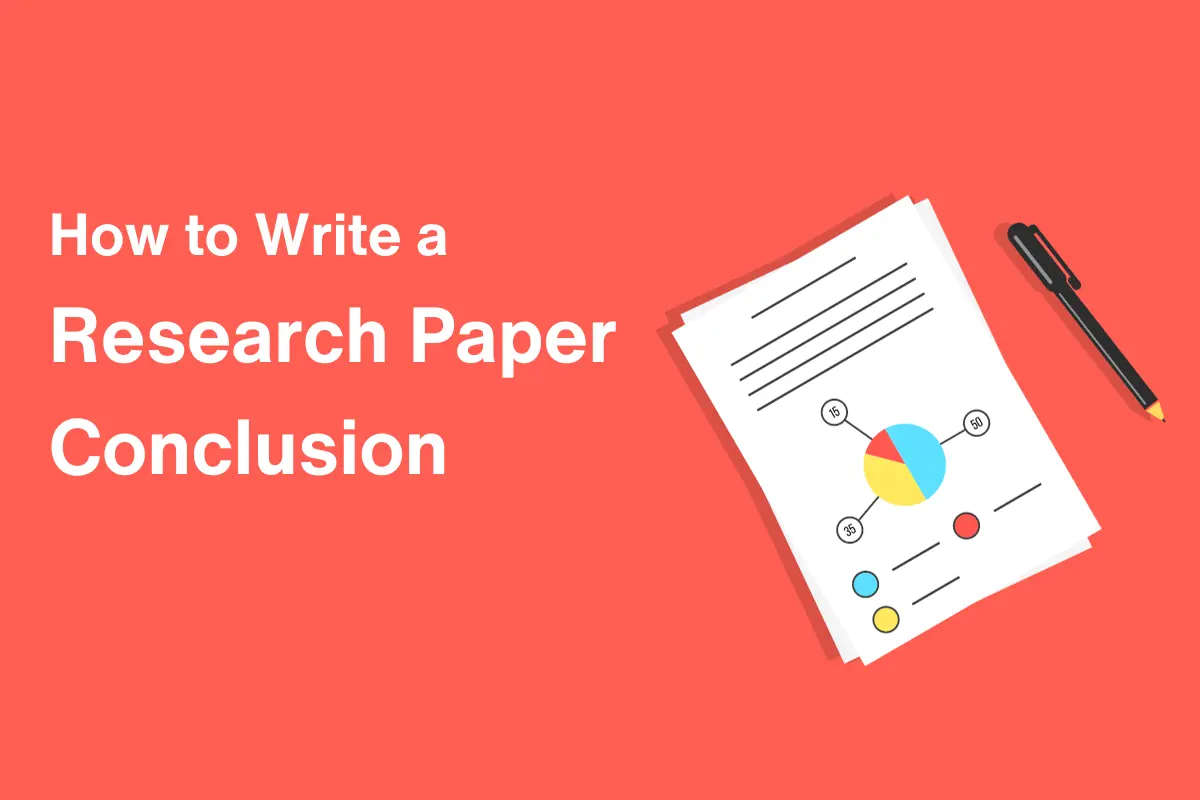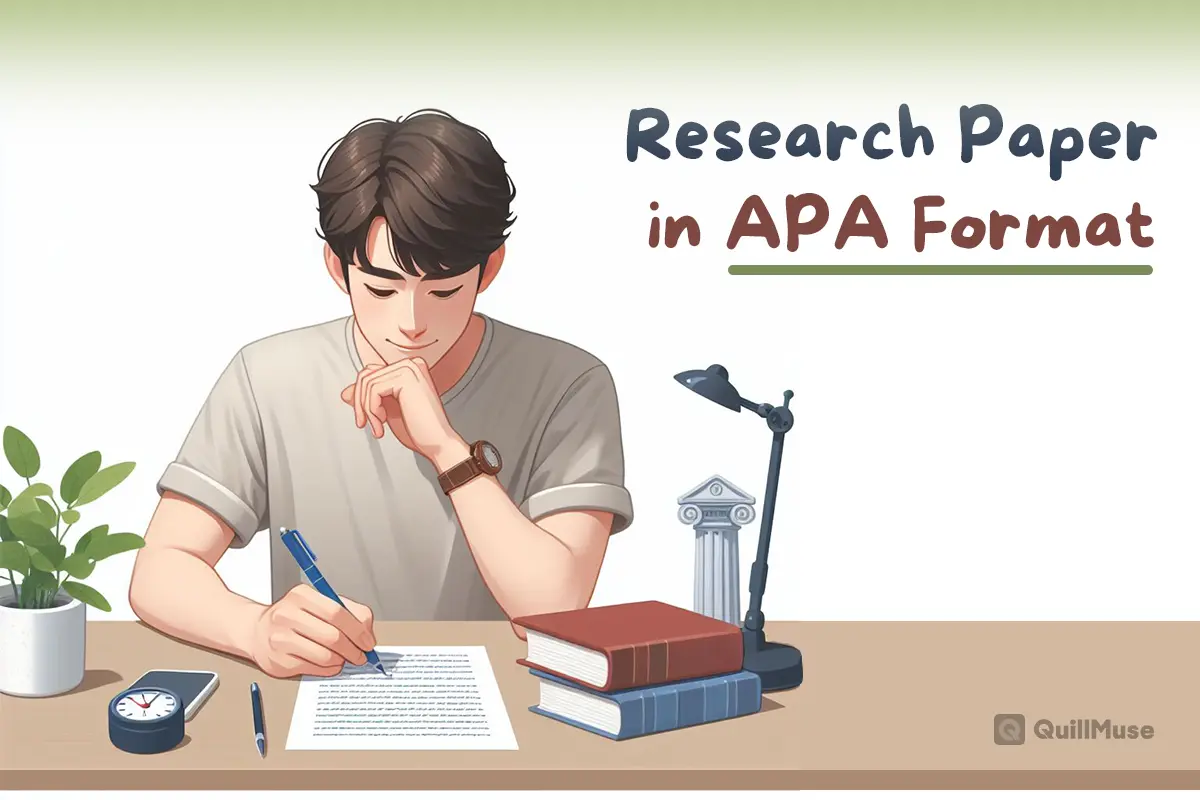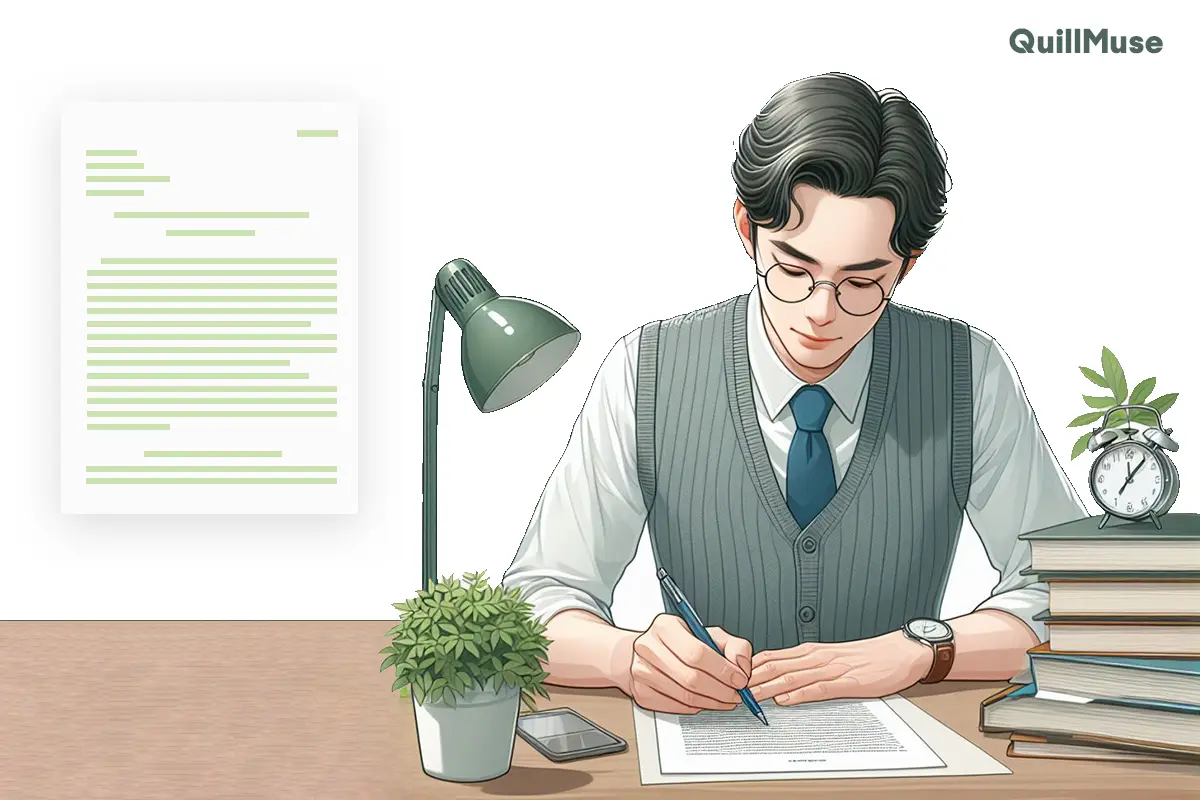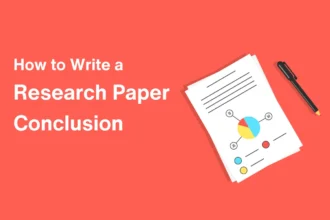How to Write a Research Paper Conclusion With Example
Learn how to write a research paper conclusion in this post.

Zannat Mou
Last updated on Mar 2nd, 2024

When you click on affiliate links on QuillMuse.com and make a purchase, you won’t pay a penny more, but we’ll get a small commission—this helps us keep up with publishing valuable content on QuillMuse. Read More.
Table of Contents
The conclusion is the last part of every research paper or document. Without a conclusion, your research paper will not be complete. A few days ago, I got some comments on our website about how to write a research paper conclusion. Some are interested in knowing about research paper conclusion examples.
Are you finding something where you can get a research paper conclusion?
If you want to get an idea about how to write a research paper conclusion, you are welcome to visit this post. If you explore this post, you will also find a research paper conclusion example.
What is a research paper conclusion?
The research paper’s conclusion is the final goal for the reader. In a research paper conclusion, is where all the information, arguments, and evidence represented throughout the paper converge. The reader concludes to find closure and a sense of fulfillment. Usually, the conclusion should not be taken lightly; it is a basic opportunity to leave a lasting impression on the reader.
Additionally, the conclusion isn’t only a repetition of the introduction or a summary of the main points. It goes beyond that by giving a more profound understanding of the research findings and their suggestions. It permits the writer to reflect on the significance of their work and its potential contributions to the field.
Types of research paper conclusions
Here we are discussing three types of conclusions that you include in your research paper.
1. Summarizing conclusion: A summarizing conclusion is the last part of the research paper, where you repeat the most important points or arguments discussed, giving closure and leaving a lasting impression on your readers. It’s a concise repetition of key thoughts or findings.
2. Externalizing conclusion: An externalizing conclusion is when you take ideas from outside of the main discussion to provide a broader point of view or relevance to the topic at hand. It includes interfacing the subject matter with larger contexts, such as real-world implications, future contemplations, or related fields of study.
3. Editorial conclusion: An editorial conclusion is when you share your personal experiences and your own opinions on the topic that you discuss.
Tips on How to Write a Research Paper Conclusion
There are so many writers, especially students, who are confused about how to write a research paper conclusion. So you can find several tips in the research paper’s conclusion.
Related: How to Write a Research Paper Introduction
1. Repeat the thesis
When you write a research paper conclusion, repeating the thesis statement is a vital step that reminds readers of the research paper’s central focus. However, it should not be a verbatim repetition of the introduction.
By repeating the thesis concisely and clearly, you’ll effectively tie together the most talked-about thoughts within the body of the paper and emphasize the centrality of the research question. In any case, keep in mind that the repeated thesis should capture the essence of the paper and leave the reader with a clear understanding of the topic and its significance.
2. Summarize the main points
To write an impactful research paper conclusion, summarizing the main points discussed within the body of the paper is essential. This last section gives the author a final opportunity to highlight the importance of their research findings.
Be that as it may, it is similarly important to maintain a strategic distance from reiterating information already discussed within the body of the paper. Instead, you should synthesize and summarize the most significant points and key findings. By doing so, the conclusion can effectively tie together the research findings and give a clear understanding of the significance of the research point.
3. Discuss the results or find research
The next step is to discuss the results or findings of the research. The discussion of the results or findings should not be a repetition of the information presented within the body of the paper.
Instead, it should give a more in-depth analysis of the significance of the findings. This will involve explaining why the findings are critical, what they mean within the setting of the research question, and how they contribute to the field or area of study.
Furthermore, it’s crucial to address any limitations or weaknesses in the research paper’s conclusion. This could provide a more adjusted and nuanced understanding of the research and its suggestions. By doing so, the reader will have a better understanding of the scope and context of the study, which can eventually improve the validity and legitimacy of the research.
4. Highlight importance
Emphasize the importance of your research paper conclusion and how it contributes to the broader field of study.
5. Do not include new points in conclusion
While you write a research paper conclusion, be careful that you do not include any new ideas or thoughts in your paper. If you include new points in your research paper, the conclusion will become more confusing. There will be no similarity between your whole body of paragraphs and your conclusion.
6. Making Closure
Make your research paper conclusion with a sense of closure, giving the reader a feeling that the paper has come to a fulfilling end.
Research Paper Conclusion Examples
Now I am sharing with all of you some effective examples of research paper conclusions. It will help you better understand how to write a research paper conclusion.
Example 1:
To sum up, with proper treatment and support, people with aphasia can considerably improve their communication skills. Speech therapy, additional and alternative communication methods, support groups, parents, and family’s self-involvement, and motivation can play significant roles in recovering aphasia patients. By managing these effects and providing a proper treatment approach, people with aphasia can improve their ability to communicate, their lifestyle, and their interactions with society and family.
Apart from being aware that we should not neglect those who are aphasia patients, We must remember that they are humans like us; they are also part of our lives and society. They also need equal rights in their lives. We should also be aware that the people around us treat and respect them well.
Example 2:
The overview of film education and training scenarios in Bangladesh shows that the film industry has significant challenges to workforce development. The difficulties in cinema education and training differ considerably from those in other mediums. The film business in Bangladesh is still active. It is comparable to a candle blazing in a strong wind. The candle, however, is still burning. Though it would be absurd to predict a fast comeback for the film business, one can be sure that it will.
There will be plenty of high-caliber films in the future. Only commitment and a passion for movies are necessary to realize that dream. Often, we see ourselves in the mirror that is cinema, according to Alejandro “Gonzalez Inarritu.” Our favorite pleasure has always been watching movies.
Example 3:
In terms of error dealing, in both classes I observed that the teacher provided numerous suggestions orally every time the students were unable to form any sentences or words, and he also assisted them in this situation so they could respond accurately. Even though accuracy was appreciated, the teacher did not discourage students from making mistakes, and it aligns with the principle of CLT. However, in the first class, during the reading task, the instructor immediately provided correct pronunciation, which falls under the principle of GTM (Larsen-Freeman and Anderson, 2011).
Hence, the primary emphasis within the observed classroom resides in the cultivation of both speaking and reading abilities, as well as the refinement of pronunciation and critical thinking skills through the integration of communicative language teaching and the direct method. Additionally, the incorporation of the Grammar-Translation Method (GTM) to address students’ errors has been notable. These principal methodologies collectively proved highly efficacious in enhancing students’ abilities according to their level of learning. Given the successful attainment of the intended learning outcomes through the implementation of these teaching methodologies, my perspective aligns with the belief that the teacher effectively realized the objectives set forth for each lesson.
Example 4:
To conclude, it can be said that the movie Pirates of the Caribbean is a great creation of magic and illusion, as well as a mixture of social status, prestige, and power. This movie can not only be seen for entertainment purposes, but it can also give a clear picture of that era’s economic colonialism. It also shows the distinction between upper-class and lower-class societies. It also shows some linguistic variation in that colonial society. All in all, it was a great movie to analyze for the researchers about social class and power.
Example 5:
To conclude, it can be said that audiovisual materials can be very effective in learning pronunciation. This is important for language learners and educators to consider when designing a language curriculum. Audiovisuals can improve the learning of different languages. It’s easier to learn an accurate pronunciation of any language. Though it’s a very useful thing for learning pronunciation, it should be noted that audiovisual materials should not get all of the priority among the other teaching methods. It can be used as an alternative so that pronunciation is more clear to the learners.
FAQs About Research Paper Conclusion
What should be included in the conclusion of a research paper?
In a research paper conclusion, you should include in summary of the main points, your opinion, recommendation, and focus on the main arguments.
What’s the recommended length for an ideal conclusion?
Seven to eight lines are enough to reach an ideal conclusion. Although sometimes it may be more or less depending on the context.
Conclusion
Writing a conclusion for a research paper is pivotal, serving as the final opportunity to leave an enduring impression on your readers. By concisely summarizing the key focuses and findings, repeating the thesis statement, and refraining from introducing new information, an effective conclusion is shaped. Highlighting the significance of the research, addressing initial goals, and discussing implications contribute to its depth.
Besides, interfacing back to the introduction and providing closure ensures a sense of completeness. Eventually, through fastidious editing and modification, a well-polished conclusion is achieved, setting the paper’s purpose and clearing out a resounding impression on the audience.
How we've reviewed this article
Our content is thoroughly researched and fact-checked using reputable sources. While we aim for precision, we encourage independent verification for complete confidence.
We keep our articles up-to-date regularly to ensure accuracy and relevance as new information becomes available.
- Current Version
- Mar 2nd, 2024
- Jan 6th, 2024


